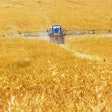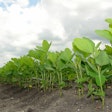
The latest U.S. Drought Monitor report, jointly produced by the National Drought Mitigation Center at the University of Nebraska-Lincoln, the United States Department of Agriculture, and the National Oceanic and Atmospheric Administration, reveals a stark contrast in agricultural conditions across the country.
In the southern Plains, farmers and ranchers are grappling with rapidly deteriorating conditions. Texas and Oklahoma have been hit particularly hard, with major dust storms and wildfires causing significant damage. On March 14 and 18, Lubbock, Texas experienced wind gusts of up to 82 mph, creating massive dust storms that severely impacted visibility and soil conditions. These events have exacerbated an already dire situation, with 71% of Texas' topsoil moisture rated very short to short, and 71% of rangeland and pastures in very poor to poor condition as of March 16.
The extreme weather has taken a heavy toll on agricultural operations in the region. Numerous wildfires raged across Oklahoma, southern Kansas, and the northern panhandle of Texas, destroying crops and grazing lands. The U.S. Department of Agriculture reports that these conditions are likely to significantly impact crop yields and livestock operations in the affected areas.
In stark contrast, California farmers received some positive news. Recent Pacific storm systems have boosted the Sierra Nevada snowpack to nearly 25 inches of water equivalency by March 18, effectively ensuring a "normal" season for irrigation water supply. This development is particularly significant for the state's Central Valley, one of the most productive agricultural regions in the world.
The Midwest presents a mixed picture for agriculture. Parts of Illinois, Indiana, and southern Michigan saw some improvement in drought conditions due to recent rainfall. However, large sections of Missouri missed out on significant precipitation, leading to increases in abnormal dryness and moderate to severe drought. This variability could impact planting decisions and early crop development for corn and soybean producers in these key agricultural states.
In the High Plains, Kansas farmers face increasing challenges. The expansion of dryness and moderate to severe drought resulted from mostly warm, dry, and windy weather. By March 16, statewide topsoil moisture in Kansas was rated 47% very short to short, raising concerns for winter wheat development and spring planting preparations.
Looking ahead, the 6- to 10-day outlook suggests the possibility of above-normal precipitation in the Pacific Northwest and southern Texas, which could bring some relief to drought-stricken agricultural areas. However, drier-than-normal conditions are expected in the Southeast and an area stretching from the Four Corners region to the central High Plains, potentially exacerbating dry conditions in these regions.
As farmers and ranchers navigate these shifting drought patterns, adaptive strategies in water management and crop selection will be crucial. The varied conditions across the country underscore the complex challenges facing U.S. agriculture in an era of changing climate patterns, highlighting the importance of continued monitoring and responsive agricultural practices.

















